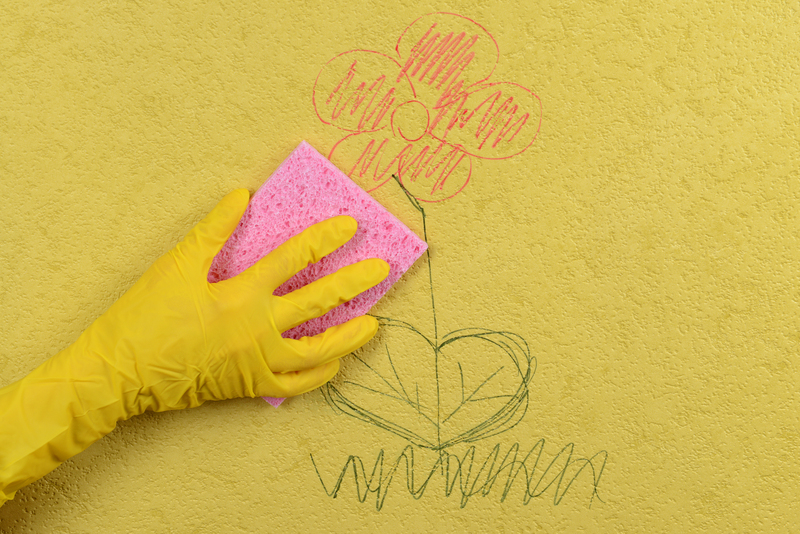Master the Art of Removing Damp Odor
Posted on 02/10/2025
Master the Art of Removing Damp Odor from Your Home
Is a persistent musty smell ruining the comfort of your home? Damp odors can be stubborn and challenging to eliminate, often signaling underlying moisture issues that, if left untreated, could lead to mold, mildew, and even structural damage. In this comprehensive guide, you'll learn how to remove damp odor, prevent recurrence, and enjoy a fresher, healthier, and more welcoming living environment.

Understanding the Source of Damp Odor
To effectively eliminate musty smells, it's crucial to understand where they come from. Damp odors are typically the result of excess moisture, which creates the ideal breeding ground for fungus, mildew, and bacteria--all of which can emit unpleasant, lingering scents. Common causes include:
- Leaky pipes or roofs
- Poor ventilation in areas like basements, bathrooms, or closets
- Condensation on windows or walls
- Flooding or water intrusion
- Unattended wet laundry or fabrics
Identifying and addressing the source of the moisture is the first, fundamental step in any successful odor removal strategy.
Why Is It Important to Remove Damp Odor?
- Health Effects: Prolonged exposure to mold and mildew can cause respiratory problems, allergies, and other health issues, especially in sensitive individuals.
- Property Damage: Moisture and dampness can weaken building materials, leading to costly repairs.
- Quality of Life: A persistent damp smell can make your home feel uncomfortable and unwelcoming.
- Resale Value: Homes with musty odors or visible mold issues can suffer in value and be difficult to sell.
Master the art of removing damp odors and you'll protect your health, it will preserve your possessions, and your home will always smell fresh and clean.
Step-by-Step Guide: How to Remove Damp Odor Effectively
1. Find and Fix the Moisture Source
Begin by thoroughly inspecting your home:
- Check for leaks in plumbing, roofing, and windows.
- Look for water stains, warped walls, bubbled paint, or damp patches on floors and ceilings.
- Examine the foundation and basement for signs of seepage.
- Inspect appliances (washers, dishwashers, water heaters) for drips or overflow.
Promptly repair any leaks and address sources of dampness before continuing with odor remediation.
2. Remove or Dry Wet Materials
- Remove soaked carpets, rugs, or upholstery for cleaning and drying.
- Dry out damp walls and floors using fans and towels.
- Dispose of heavily infested or irreparably damaged materials.
Tip: The quicker you dry out wet items, the less likely mold and odor-causing bacteria will grow.
3. Increase Ventilation and Airflow
- Open windows and doors to promote cross-ventilation (weather permitting).
- Use portable or ceiling fans to circulate air.
- Install or upgrade your home's exhaust fans in bathrooms and kitchens.
- For chronically damp areas, consider a dehumidifier to pull excess moisture from the air.
Good airflow is essential to stifle the growth of musty-smelling microbes.
4. Neutralize Odors with Natural Solutions
- Sprinkle baking soda on carpets and furniture; let it sit several hours, then vacuum.
- Place bowls of white vinegar or activated charcoal in the affected rooms to absorb odors.
- Use a mixture of vinegar and water to wipe down hard surfaces.
- Try natural odor absorbers like coffee grounds, cat litter, or zeolite rocks.
These natural odor eliminators are safe, inexpensive, and effective for routine use.
5. Clean with Antimicrobial Solutions
- Mix water with hydrogen peroxide (3%) or specialized mold remover sprays to clean tiles, grout, or wood.
- Scrub visible mold or mildew with a brush and solution--avoid mixing bleach with ammonia.
- Wash all affected fabrics (curtains, bedding, etc.) in hot water with vinegar or baking soda.
Always wear gloves and ensure good ventilation when using cleaning chemicals.
6. Replace Air Filters and Clean Ducts
Your HVAC system can circulate damp odors if filters or ducts are dirty. Replace all air filters regularly and consider professional duct cleaning for persistent, widespread smells.
7. Professional Help: When to Call the Experts
- Extensive or recurring mold/mildew issues
- Water damage from severe flooding or untraceable leaks
- Persistent odors after DIY efforts
Professional remediation services use advanced equipment and treatments to guarantee the problem is solved at its root.
Advanced Tips For Persistent Damp Smells
Keep Humidity Under Control
- Ideal indoor humidity should be between 30-50%.
- Use hygrometers to monitor levels, especially in basements or laundry rooms.
- Set dehumidifiers to kick in automatically if levels rise.
Improve Insulation and Drainage
- Seal windows and door leaks with weatherstripping or caulk.
- Direct rainwater away with proper gutter maintenance and landscaping.
- Add vapor barriers in crawl spaces or basements if needed.
Use Air Purifiers
HEPA-filter air purifiers with activated carbon can significantly reduce airborne odorous particles and allergens. This is especially helpful if family members have sensitivities.
Regular Maintenance Routines
- Laundry: Always dry clothing promptly and avoid leaving wet loads in washing machines.
- Bathrooms: Wipe surfaces dry, fix dripping faucets, and use bath fans.
- Basements: Check and repair any cracks or leaks frequently.
- Storage: Store items in airtight containers or use moisture-absorbing packets.
Preventing Damp Odor: Long-Term Strategies
Invest in Water-Resistant Materials
During renovations or new builds, use moisture-resistant drywall, ceramic tiles for floors, and anti-microbial treated underlays. These materials deter moisture buildup and reduce future odor risks.
Gutter and Downspout Management
- Keep gutters clear of debris year-round.
- Ensure downspouts carry water at least 5-10 feet away from the foundation.
Consistent Home Checks
Perform seasonal inspections of your roof, crawl spaces, and exterior walls to spot possible leaks or water entry before they develop into odor-causing problems.
Educate Residents
Create household habits that reduce excess moisture: vent showers and cooking and avoid air-drying laundry indoors in poorly ventilated spaces.
Frequently Asked Questions (FAQ): How to Remove Damp Odor
Q1: Why does my home smell musty even after cleaning?
This could indicate hidden moisture or mold behind walls, under carpets, or inside HVAC ducts. Persistent damp smells often require a deeper investigation and ongoing moisture management.
Q2: Is it safe to use bleach for odor removal?
Bleach can kill surface mold and reduce odor, but it's best for non-porous materials. Bleach may not penetrate porous surfaces deeply. For long-term success, combine with other moisture control measures.
Q3: How can I remove damp odor from clothes and fabrics?
- Launder using hot water with vinegar or baking soda.
- Dry thoroughly in sunlight if possible, as UV rays help kill odor-causing microbes.
- If the odor persists, try an enzymatic cleaner or repeat washing cycles.
Q4: What's the fastest way to remove damp odor before guests arrive?
- Run fans or a dehumidifier in the problem area for quick drying.
- Place bowls of vinegar or activated charcoal to rapidly absorb odors.
- Spritz the air with a mixture of essential oils and water for a pleasant scent.

Damp Odor Removal: Common Mistakes to Avoid
- Masking smells with air fresheners instead of dealing with the root cause.
- Ignoring early signs of moisture, such as condensation or minor leaks.
- Assuming proper cleaning alone will prevent recurrence without moisture control.
- Forgetting to regularly inspect lesser-used spaces like attics, crawlspaces, or storage rooms.
Proactively removing damp odors means committing to ongoing vigilance against moisture and hygiene lapses. If you only cover up the smell, it will return and may worsen.
Conclusion: Enjoy a Fresh, Odor-Free Home
You can master the art of removing damp odor by combining diligent cleaning, fixing leaks, enhancing ventilation, and practicing preventive care. These comprehensive, step-by-step strategies will not only eliminate musty odors but also safeguard your health, property, and overall well-being.
Remember, every home is unique--so tailor these recommendations to your specific situation. Vigilance, fast action, and preventive maintenance are your best allies in the ongoing battle against unwanted damp scents.
Take control of your indoor environment today and breathe easy in a home that smells as fresh as it looks. For more expert tips on home maintenance and improving air quality, stay connected with our resourceful guides.




